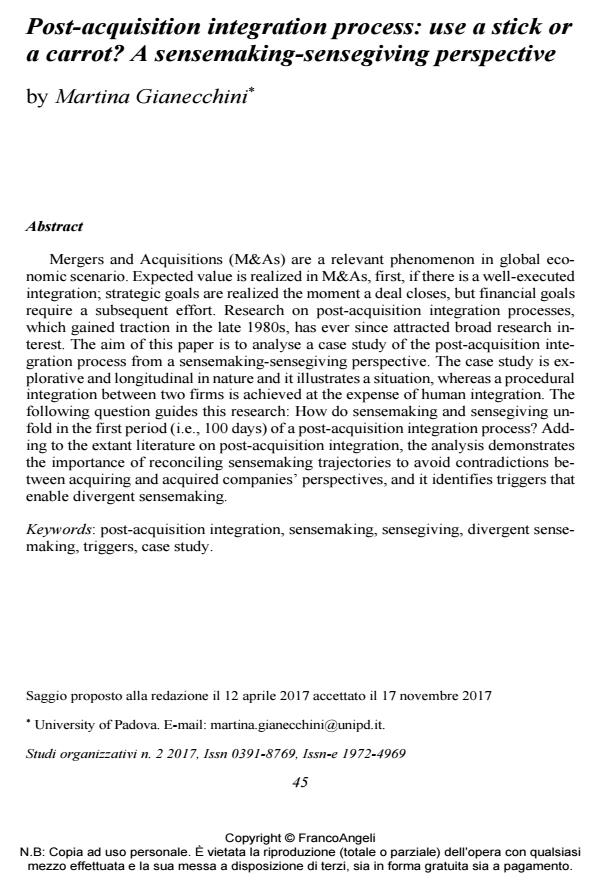Post-acquisition integration process: use a stick or a carrot? A sensemaking-sensegiving perspective
Journal title STUDI ORGANIZZATIVI
Author/s Martina Gianecchini
Publishing Year 2018 Issue 2017/2
Language English Pages 23 P. 45-67 File size 258 KB
DOI 10.3280/SO2017-002003
DOI is like a bar code for intellectual property: to have more infomation
click here
Below, you can see the article first page
If you want to buy this article in PDF format, you can do it, following the instructions to buy download credits

FrancoAngeli is member of Publishers International Linking Association, Inc (PILA), a not-for-profit association which run the CrossRef service enabling links to and from online scholarly content.
Mergers and Acquisitions (M&As) are a relevant phenomenon in global eco-nomic scenario. Expected value is realized in M&As, first, if there is a well-executed integration; strategic goals are realized the moment a deal closes, but fi-nancial goals require a subsequent effort. Research on post-acquisition integration processes, which gained traction in the late 1980s, has ever since attracted broad research interest. The aim of this paper is to analyse a case study of the post-acquisition integration process from a sensemaking-sensegiving perspective. The case study is explorative and longitudinal in nature and it illustrates a situation, whereas a procedural integration between two firms is achieved at the expense of human integration. The following question guides this research: How do sense-making and sensegiving unfold in the first period (i.e., 100 days) of a post-acquisition integration process? Adding to the extant literature on post-acquisition integration, the analysis demonstrates the importance of reconciling sensemaking trajectories to avoid contradictions between acquiring and acquired companies’ perspectives, and it identifies triggers that enable divergent sensemaking.
Keywords: Post-acquisition integration, sensemaking, sensegiving, divergent sensemaking, triggers, case study
Martina Gianecchini, Post-acquisition integration process: use a stick or a carrot? A sensemaking-sensegiving perspective in "STUDI ORGANIZZATIVI " 2/2017, pp 45-67, DOI: 10.3280/SO2017-002003